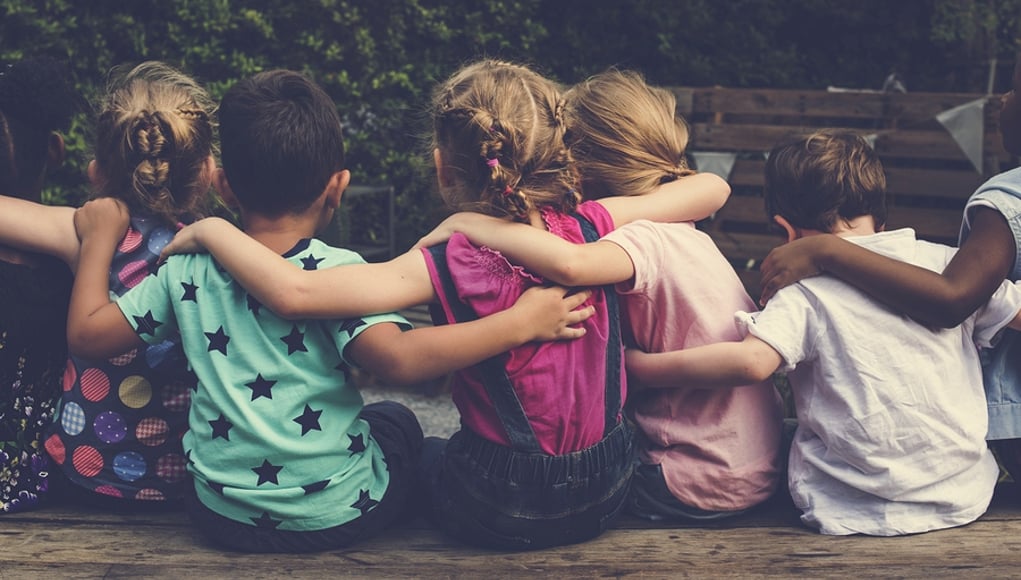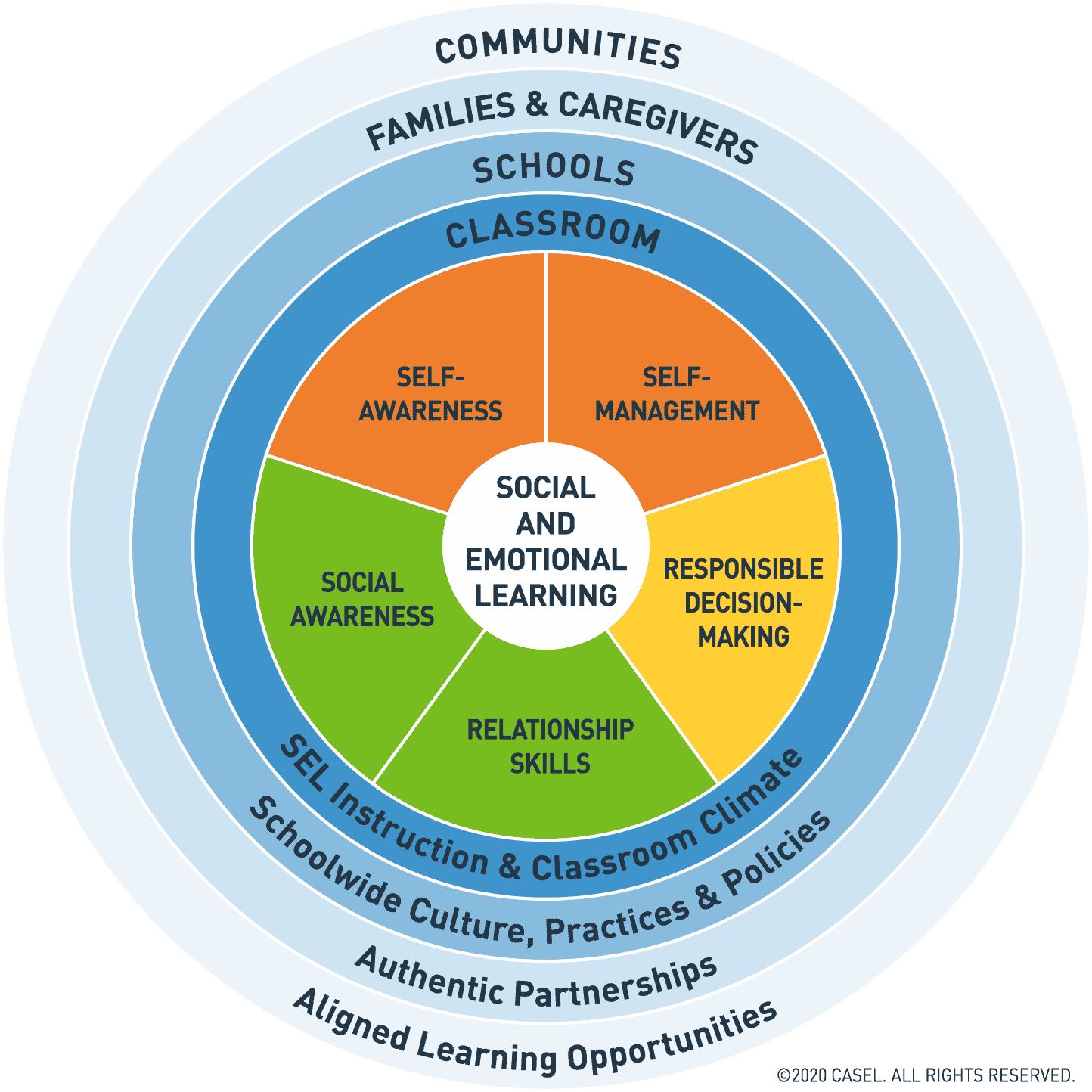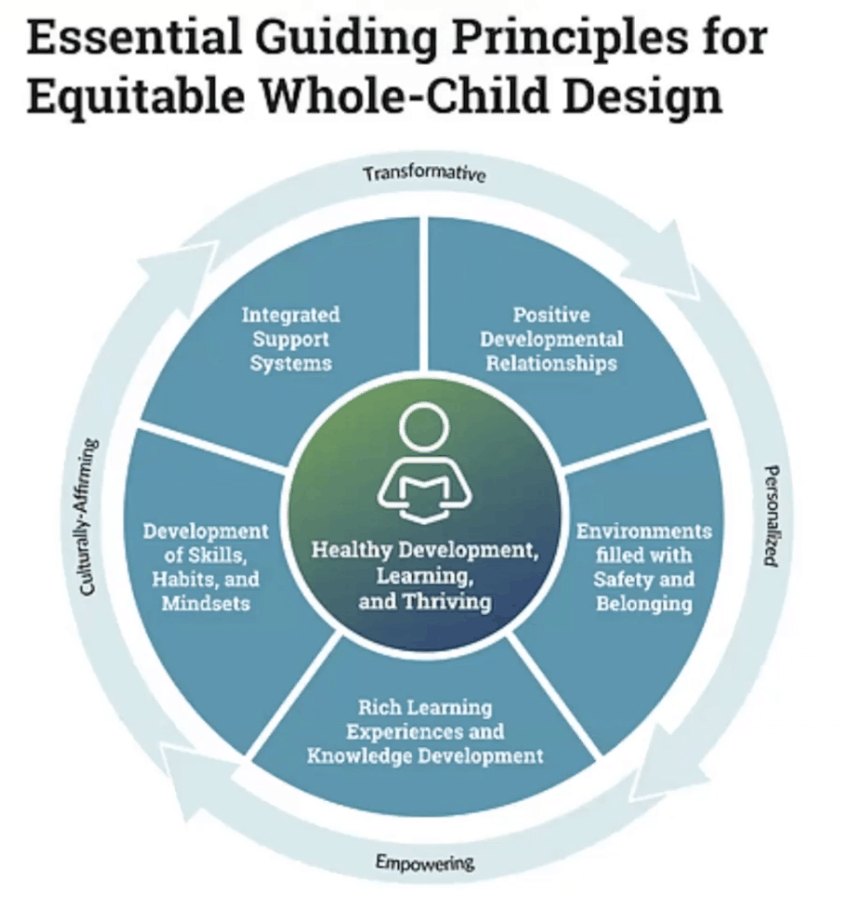Social-Emotional Learning and Whole Child Education: Approaches for Supporting Students’ Learning and Development

By: Justina Schlund
Education leaders know that students thrive when schools, families, and communities work together to fully support all aspects of learning and development. To meet this priority, educators have looked to several approaches for cultivating school systems that focus holistically on students’ skills development, relationships, environments, and overall well-being.
Two of the most common approaches — Social and Emotional Learning (SEL) and Whole Child Education — build on brain science and decades of research. How can education leaders use them to effectively support students’ learning and development?
What is SEL and what does it look like in schools?
The Collaborative for Academic, Social, and Emotional Learning (CASEL) introduced the term “SEL” in 1997 and defines it as: “the process through which all young people and adults acquire and apply the knowledge, skills, and attitudes to develop healthy identities, manage emotions and achieve personal and collective goals, feel and show empathy for others, establish and maintain supportive relationships, and make responsible and caring decisions.”
CASEL’s Framework for SEL identifies five core social and emotional competencies (self-awareness, social awareness, self-management, relationship skills, and responsible decision-making) that can be taught and applied throughout developmental stages and across diverse cultural contexts. The framework also focuses on key settings (classrooms, schools, homes, and communities) where it’s important to establish equitable learning environments and coordinate practices to enhance students’ social, emotional, and academic learning.

Many states have used this framework to develop SEL standards or guidelines that define what students should know and be able to do. These standards help schools and districts make implementation decisions when selecting evidence-based programs, professional learning, or assessments.
Schools and districts can implement SEL in many different ways. This includes explicitly teaching social and emotional skills, integrating SEL into academic instruction, and building a sense of community throughout the school. It can also include strategies to strengthen adult SEL, such as giving educators opportunities to reflect on their own competencies or build relationships with colleagues.
What is Whole Child Education and what does it look like in schools?
Like SEL, whole child education can be implemented in many different ways. According to the Learning Policy Institute (LPI), a whole child education “prioritizes the full scope of a child’s developmental needs as a way to advance educational equity and ensure that every child reaches their fullest potential. A whole child approach understands that students’ education and life outcomes are dependent upon their access to deeper learning opportunities in and out of school, as well as their school environment and relationships.”
LPI, with Turnaround for Children, has developed guiding principles for whole child design that focus on practices to support deeper learning. These include five elements aimed at creating transformative, personalized, empowering, and culturally affirming learning environments and experiences:

- Positive Developmental Relationships
- Environments Filled With Safety and Belonging
- Rich Learning Experiences and Knowledge Development
- Development of Skills, Habits, and Mindsets
- Integrated Support Systems
Additionally, many schools and districts have used the Centers for Disease Control and Prevention’s Whole School, Whole Community, and Whole Child (WSCC) model, or ASCD’s indicators of a whole child approach to consider the connections between physical health, mental health, SEL, school climate, and academic achievement.
How are SEL and Whole Child Education Connected, and Where do They Differ?
Both SEL and Whole Child Education offer ways of approaching education to holistically support students’ learning and development. As systemic approaches, they both focus on school-family-community partnerships to create rich learning environments and experiences that meaningfully engage students. They can both address school climate and relationships, teacher well-being and practices, curriculum and instruction, related policies, and continuous improvement processes.
Many of the instructional practices emphasized by SEL and Whole Child Education are similar — for example, both elevate strategies for promoting collaboration, reflection, critical thinking, and problem-solving. As such, both SEL and Whole Child Education can incorporate a variety of other strategies, such as Project-Based Learning, Service-Learning, and student voice initiatives. But SEL may frame these as integration of social, emotional, and academic learning, while Whole Child approaches may frame them as cognitive strategies for deepening knowledge and understanding.
While SEL and Whole Child Education are similar, and the terms are often used interchangeably, there are also important distinctions beyond language.
In addition to addressing academic integration and supportive learning environments, SEL places more emphasis on defining and explicitly teaching social and emotional competencies, especially through evidence-based programs and practices that have been demonstrated to show positive outcomes. Evidence-based programs that focus on explicit SEL instruction can be part of Whole Child models, but often the emphasis is on integration across school climate and/or academics.
SEL is often used to integrate with local priorities and can support a variety of long-term goals for both students and adults — for example, it can promote equitable learning environments by helping educators develop a deeper awareness of students’ cultures and backgrounds. It can also promote mental health by helping students develop skills to manage stress and anxiety. With SEL, schools, families, and community partners work together to develop a vision that shapes how competencies are elevated and taught.
Whole Child Education is a much broader framework that often includes a wider range of considerations. Some models, such as WSCC, emphasize SEL alongside physical education, health, safety, and counseling services. In LPI’s design principles, SEL is an aspect of developing positive relationships and essential skills, habits, and mindsets toward a goal of deeper academic learning.
Similarly, Whole Child Education models can encompass multiple frameworks, while SEL approaches often aim to integrate across frameworks. For example, Whole Child Education includes tiered interventions and student services as elements to address higher levels of academic, behavioral, and mental health needs. SEL approaches often fit within and help coordinate tiered intervention systems – emphasizing a universal, strengths-based strategy for all students and helping build alignment and pathways to targeted and intensive academic and behavioral supports.
What are important considerations for implementation?
Schools may choose to integrate both SEL and Whole Child Education or adopt one as the central framework for guiding students’ learning and development.
If integrating both approaches, it can be helpful to frame Whole Child Education as a broader umbrella that encompasses evidence-based SEL strategies alongside other strategies. It’s also important to understand how SEL can support all the elements of Whole Child Education, and use this understanding to inform specific practices, programs, and policies.
When deciding between SEL or Whole Child Education as a central framework, it’s useful to consider the practical implications of how each approach may align with local priorities and needs. If stakeholders are already familiar with initiatives that refer to SEL or Whole Child, it can also be helpful to maintain the consistent language. If districts and schools are seeking more concrete guidance, SEL may connect to state standards and offer tangible implementation strategies and options for evidence-based programs and professional learning. On the other hand, if your community is seeking more flexibility or greater focus on deeper learning, Multi-Tiered Systems of Support, or health and safety, Whole Child Education may offer a broader umbrella for connecting many different strategies and initiatives.
Whichever way schools and districts choose to use these approaches, it’s important to begin with a needs and resource assessment to build on existing efforts and better understand how schools, families, and communities are already supporting students’ learning and development.
Both of these approaches can help cultivate high-quality social, emotional, and academic learning that advances equity and excellence throughout school systems. By intentionally framing their efforts, education leaders can help ensure effective structures that work together to help all students thrive.
For more, see:
- Recap: A Fireside Chat About Returning to School With a Whole-Child Approach
- Why SEL is More Important Than Ever: Meeting SEL Needs Virtually
Justina Schlund leads the translation of CASEL’s learning and expertise into content to deepen and expand SEL knowledge across the education field. She oversees content strategy of all of CASEL publications and platforms in close collaboration with the research, practice, and policy teams.






0 Comments
Leave a Comment
Your email address will not be published. All fields are required.